A fairly obscure 16th Century playwright once wrote, “a rose by another name would smell as sweet.” (OK, so it was Shakespeare.) In other words, things retain their inherent sense of being, regardless of what you call them.
With all due respect to the Bard, that mindset doesn’t really fly in the world of marketing. Would Google be the unstoppable global juggernaut we all know today if its founders had stuck with their original name: BackRub? I think not.
Your company name, logo, color scheme, style guidelines, core values, messaging: All of this stuff matters. Each piece combines to make up your brand, and there’s no greater asset for digital marketers than a strong company brand.
Your brand defines who you are as a business and how customers think of you. Or as Jeff Bezos once put it,
“Branding is what people say about you when you’re not in the room.”
If you’re suffering from a bit of an identity crisis and having trouble defining your brand and shaping your marketing strategy around it, then branding tools can provide some major clarity. We’ve compiled some of the best branding tools available today that are sure to help you fix whatever issues you’ve run into.
But first, a little background on branding tools:
What Are Branding Tools?
Simply put, branding tools help businesses:
- Create a brand and establish a strong online presence.
- Define brand guidelines.
- Increase brand awareness and visibility.
- Strengthen their brand reputation among customers, industry members and their target audience.
Branding tools cover a lot of ground, and can include software applications, platforms and marketing techniques. Once you start exploring your options, you’ll find that there are branding tools designed for email marketing, social media engagement and visual storytelling, among other key areas.
Why Are Branding Tools Useful in a Marketing Campaign?
Consistency is key when it comes to branding. Your brand needs to be accurately represented in every aspect of your marketing strategy. When you look at how complex digital marketing has become and all the different channels businesses need to account for, maintaining a clear brand identity and voice at all times can be pretty difficult.
Branding tools ensure that every interaction, message, piece of content and action you take as a marketer accurately reflects your brand. You can be confident that the brand you worked so hard to create is always presented to your target audience, no matter where that interaction takes place.
These solutions are also useful for businesses that may need help repackaging their brand for different formats. Digital marketing involves a lot of different media formats: written content, imagery and design, video, etc. How do you communicate your company’s core identity through audio and visual elements, as well as the written word?
Branding tools simplify what could easily be an exercise in frustration.
Subscribe to
The Content Marketer
Get weekly insights, advice and opinions about all things digital marketing.
Thank you for subscribing to The Content Marketer!
What Types of Branding Tools Are There?
As we noted earlier, branding tools cover a lot of ground and touch every corner of digital marketing. Consider these 9 branding tools the must-haves for your marketing strategy:

1. Branding for Email: HubSpot Email Signature Generator
After all these years, email marketing is still going strong. With an average return on investment of 42:1, it’s not hard to see why email marketing has enjoyed such longevity. To realize that kind of eye-popping ROI, though, you need your email strategies to be firing on all cylinders. Every part of every marketing email should reflect your brand identity and deliver the right message.
That includes your email signature.
There are a bunch of branding tools to help marketers design a winning email signature, but for our money, HubSpot’s Email Signature Generator is one of the best around. It’s so user-friendly and straightforward, you can create a professional email signature that’s easy on the eyes and aligns with your style guidelines. With different themes, templates and features to choose from, you can create the right email signature for your brand in no time at all.
How can we possibly know all this? Because Brafton uses HubSpot’s tool to design email signatures for every one of our employees. Check it out:
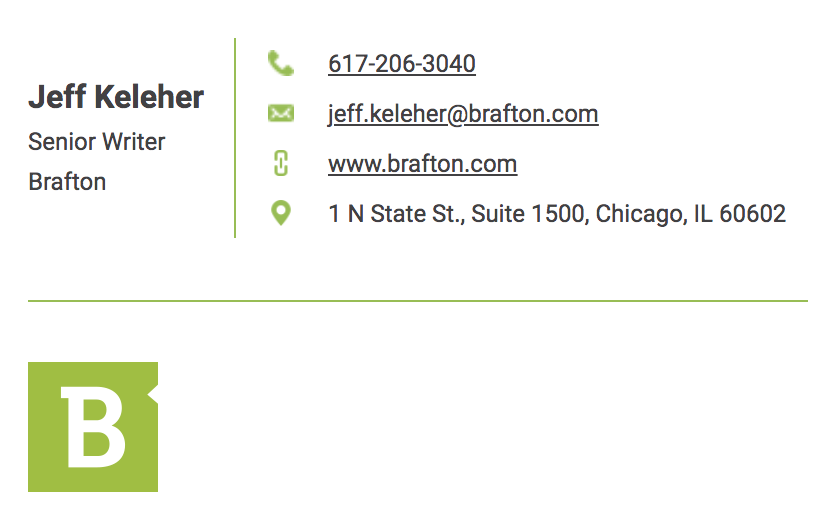
Did we mention it’s free? There’s really no downside here.
Branding for Social Media Presence: Lightroom
Social media is a critical marketing channel for B2C and B2B companies alike. According to Sprout Social, 84% of consumers will buy from a brand they follow on social media platforms rather than go with a competitor.
There are branding tools to help with everything from creating social media posts to refining your social media profile. In many cases, these solutions are geared toward specific social media platforms like Instagram, Facebook or Twitter. It’s tough to pick just one to highlight, but we’re giving that honor to Adobe’s Lightroom.
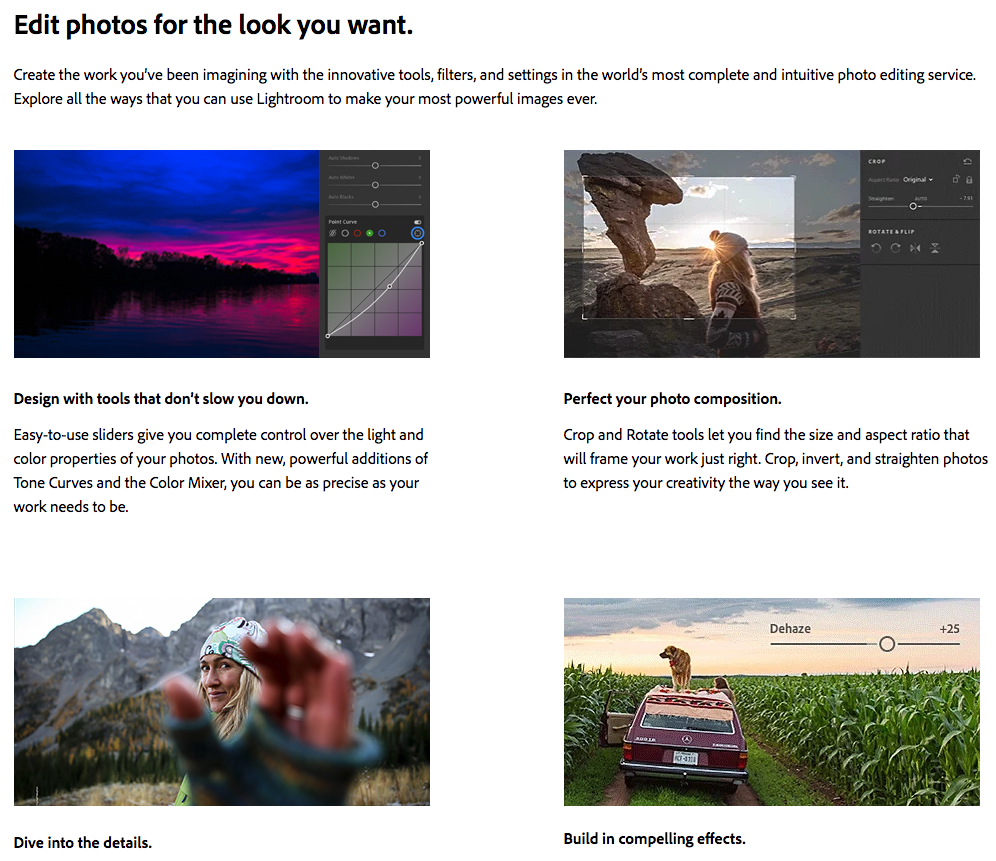
At its core, Lightroom is a photo-editing tool, letting marketers tweak and organize their social media images with relative ease. Its user-friendly features allow any marketer to dive in and start refining shared images to align with their visual branding.
Lightroom does require a monthly paid subscription, but you’d be hard-pressed to find any social media marketing tool that’s completely free of charge.
3. Branding for Search: SEMrush
Every good marketing strategy accounts for search engine optimization (SEO), and that includes ranking for the right search terms to raise your business’s online profile and increase brand awareness.
SEMrush is a great tool for all things related to SEO, providing keyword research, competitive analysis and content guidance. The platform also tailors results according to location and device, letting businesses craft their SEO marketing strategy around their specific target audience.
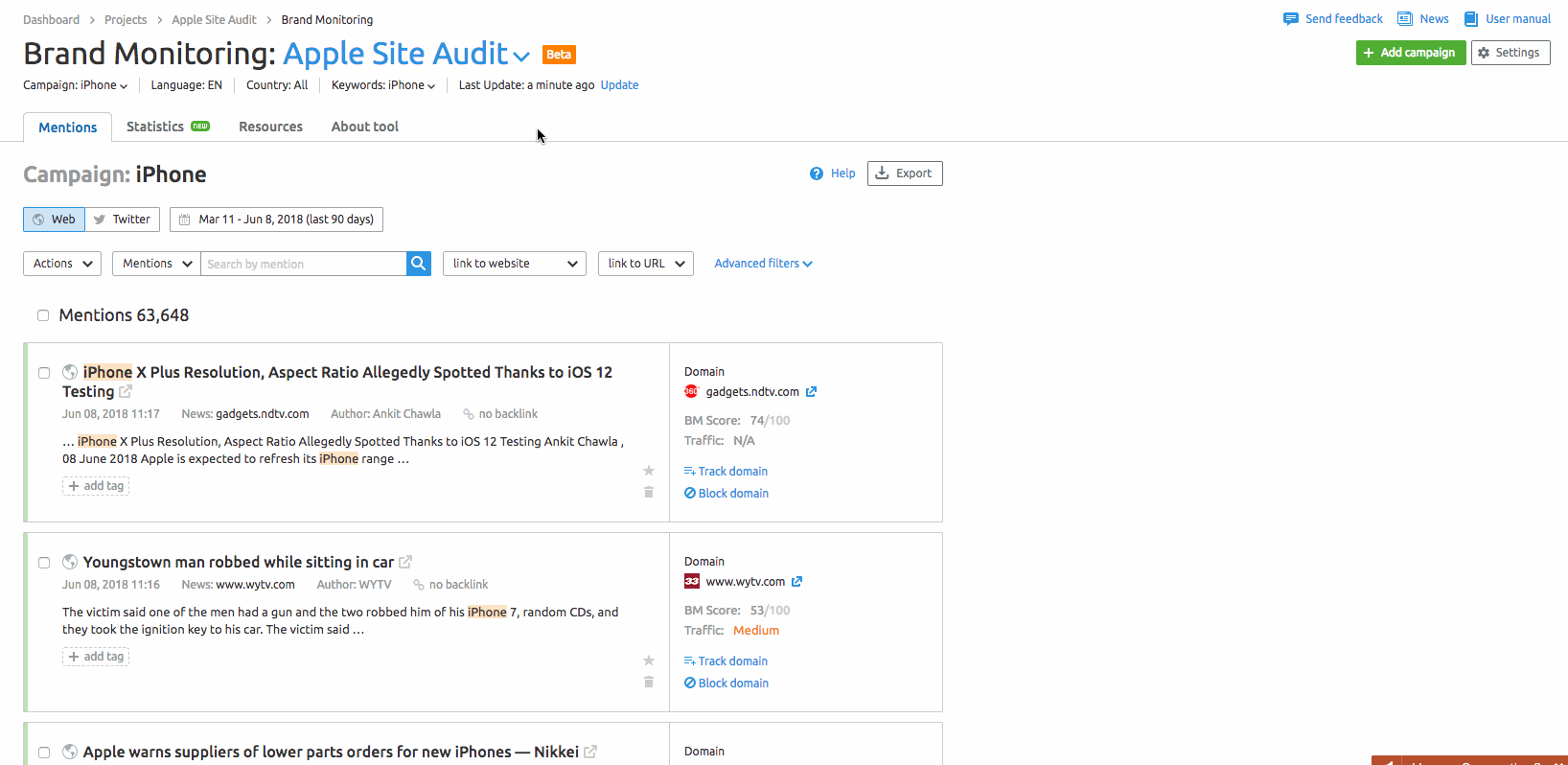
It’s one of our go-to tools here at Brafton, and every marketer should have SEMrush on tap to guide their digital marketing strategies.
4. Branded Content: Instagram Branded Content
Creating content for your social media feeds doesn’t need to fall squarely on your shoulders. Working with influencers, industry thought leaders, business partners and other brands to publish social media content is a great way to reach new audiences and build brand awareness.
Branded content can be tough to execute, especially since social media users are often suspicious of promotional posts. To help walk that line with all the grace and balance of a tightrope walker, marketers can turn to Instagram’s Branded Content tools.
Instagram allows brands to easily tag other business partners in their posts and let followers know when content is published as part of a commercial agreement.
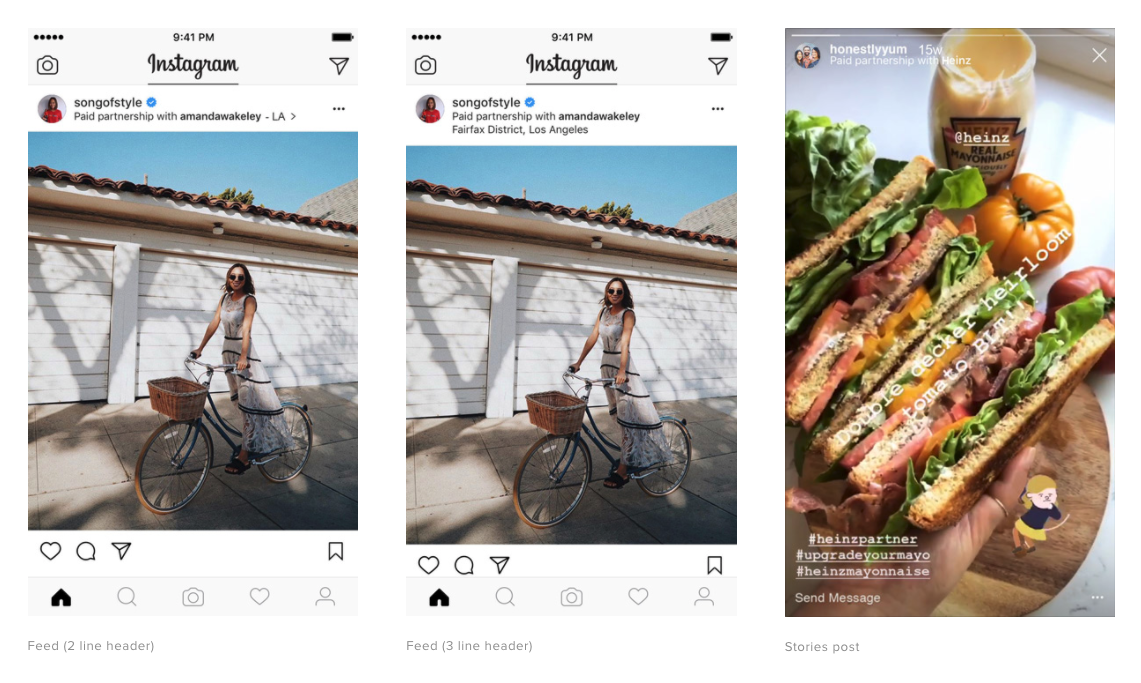
When it comes to building a good social media reputation, it pays to be transparent, and Instagram gives you the right tools for the job.
5. Visual Branding: Piktochart
Infographics, custom images and other visual content should all reflect your brand identity, incorporating your color scheme and style guidelines into every design.
Nothing beats having a team of talented graphic designers to whip up infographics whenever you need them, but if that’s not feasible, you can always take advantage of visual branding tools to fill that skills gap. Piktochart is a great tool for marketers who don’t have the design chops to create professional graphics, images and artwork on their own.
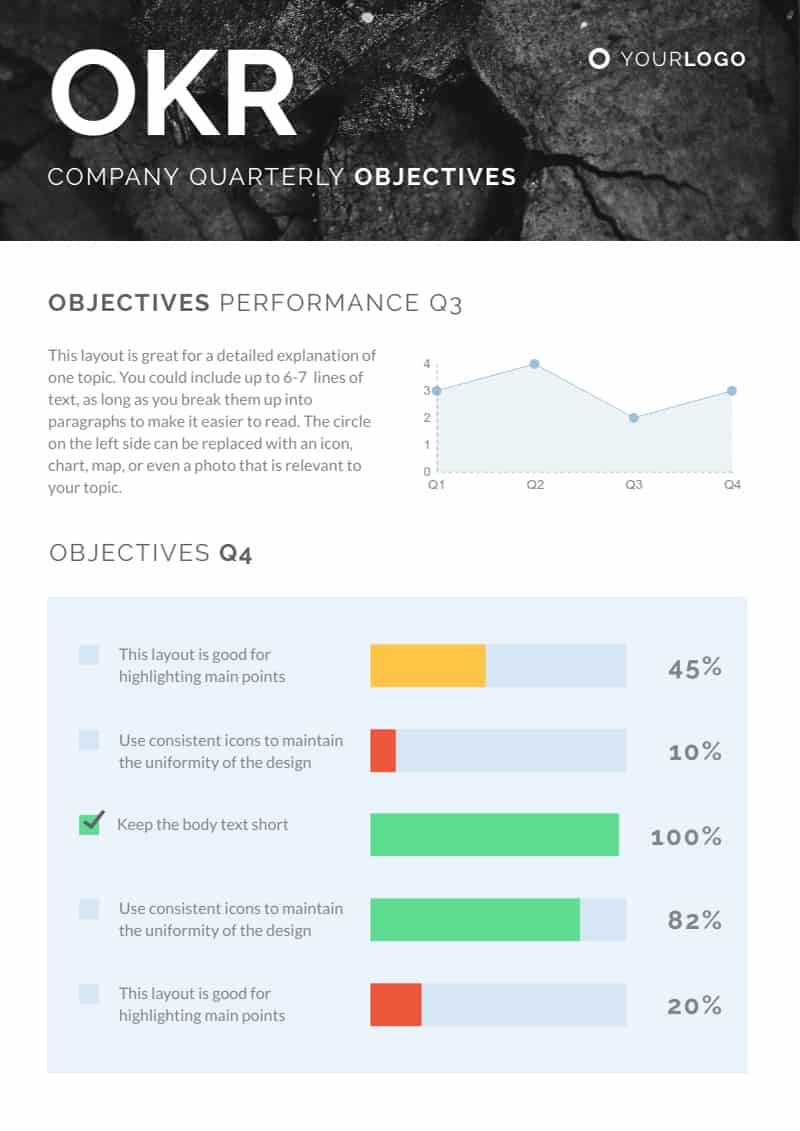
It’s easy to jump in and start building out infographics, newsletters, eBooks and anything else you need to promote your visual branding.
6. Video Branding Tools: Wistia
You can’t have a well-rounded content marketing strategy without video content.
Of course, as anyone who’s dipped their toes into the video water can tell you, creating professional video content doesn’t come cheap. Adobe Spark may be the gold standard when it comes to video branding software, but if you’re not a professional videographer or animator, you may struggle to get your full money’s worth out of it.
But there are video branding platforms out there to help level the playing field for marketers who lack the budget for a full-fledged video animation team.
Wistia, for instance, augments its video-hosting platform with tons of customization options, so you can add company logos, tweak colors, overlay text and incorporate calls to action.

You can try out Wistia with its free trial, but you’ll need to pony up for a paid plan to unlock everything it has to offer.
7. Branding Tools for Logo Design: Adobe Illustrator
A great logo can tell prospective customers everything they need to know about your brand without you having to utter a single word.
That’s easier said than done, of course, but logo design software can help. The undisputed king of the logo design world is still Adobe Illustrator after all these years, as the platform continues to add new features to make it easier for marketers to create attention-grabbing company logos.
Perhaps the coolest feature is the ability to scan your hand-drawn designs and use them as the foundation for a killer logo.
Adobe Illustrator requires a paid subscription, but it’s worth the money if you’re serious about graphic design.
For a free and easy-to-use alternative for branding, we would recommend Logo.com’s logo maker or business name generator.
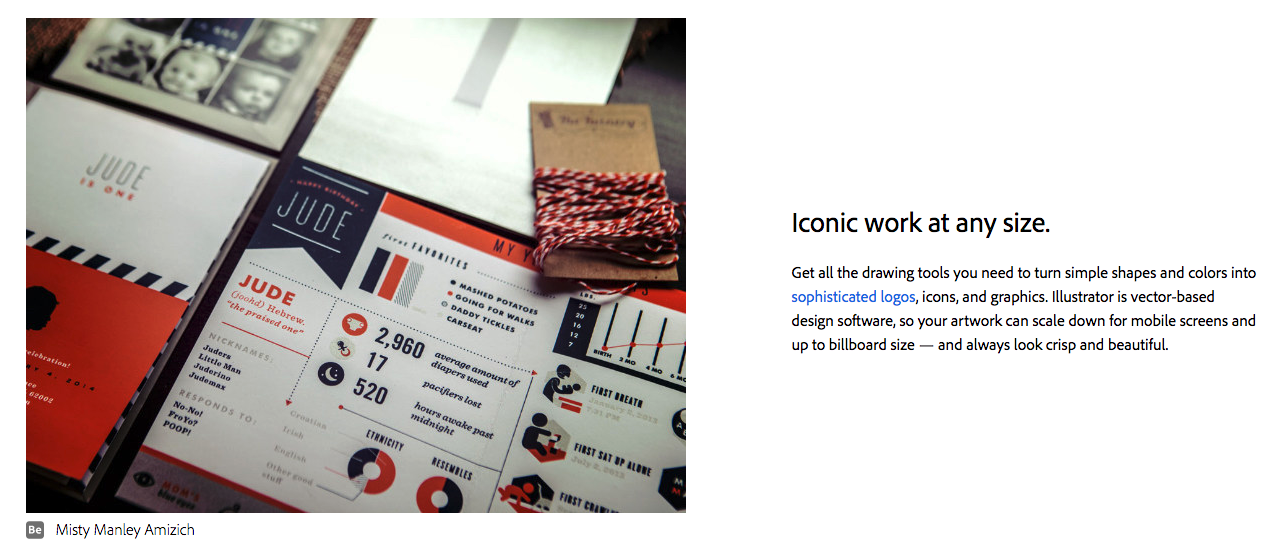
8. Brand Style Guide Tools: Frontify
Every piece of content you publish, every interaction you have with a potential customer and every message you send out into cyberspace needs to adhere to the same brand guidelines to ensure your business is always represented the way you want it to be. Once you start branching out into guest blogging, social media branded content and business partnerships, it becomes even more important to maintain strict brand guidelines.
Web-based style guide platforms like Frontify can help you cover all of your bases, from building a style guide with preloaded templates to sharing your guidelines with creative teams, third-party vendors and your closest business partners.
9. Brand Voice and Writing Tools: Quordoba
After you’ve spent hours painstakingly crafting your style guide, how can you be sure your in-house writers, outsourced creative teams and assorted freelancers stick to those rules? You need a content audit platform to continually review blog posts, articles, case studies, social media posts and other written content to flag any deviations from your brand guidelines.
Quordoba bills itself as “content intelligence software,” meaning it uses advanced AI to check that every landing page, guest blog and article on your website follows your in-house style. The digital age calls for cutting-edge solutions, and an AI-driven content review platform could be just what your brand needs.
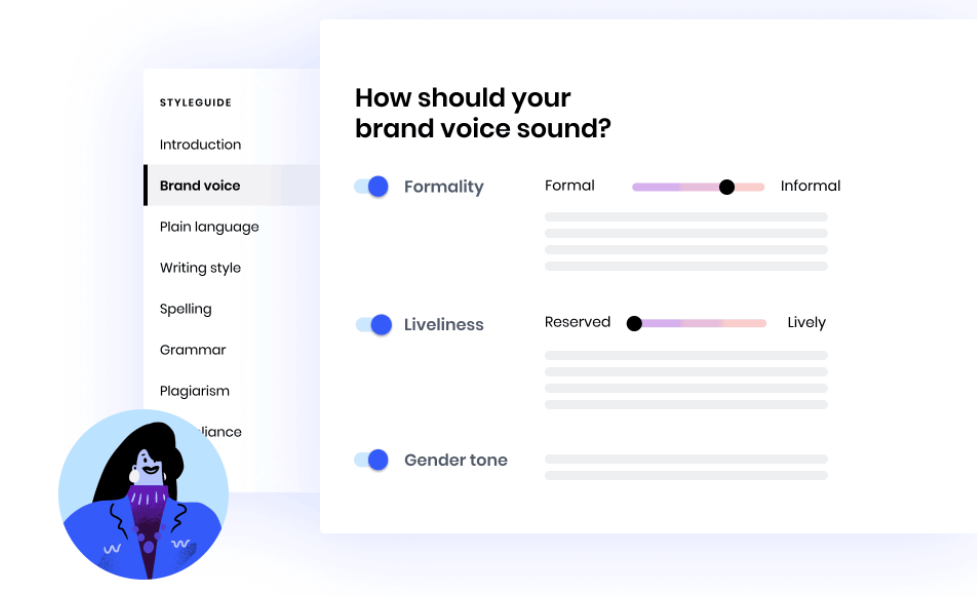
This only scratches the surface of the wide world of branding tools that are available to digital marketers. There are tons of options to choose from – and the best part is, a lot of them are either free or offer free trials to figure out if they’re right for you. Hopefully, our list gives you a jumping-off point to start exploring the latest marketing solutions to help build and promote your brand.





